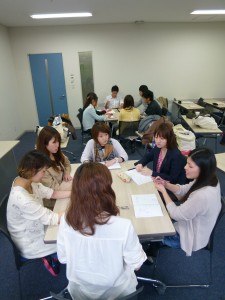1. In the beginning
Promoting active learning (AL) -type lessons in the Central Education Council "Integrated Reform of Higher Education, University Education, and University Entrance Examination Selection to Realize Higher-University Connections Suitable for the New Era" (December 2014, 12) Since the report, discussions have begun to occur in high schools / universities and the places surrounding them about what kind of classes / lectures AL is and how to do it.
In fact, books on the definition of AL and its social significance and historical background (for example, Shinichi Mizogami [2014] "Active Learning and the Transformation of the Teaching Learning Paradigm" Toshindo) and AL are merely superficial methodologies. Theoretical and practical accumulation of AL has been published, such as the publication of a book focusing on the deep learning that is at the essence of the book (for example, Kayo Matsushita [2015] "Deep Active Learning" Keikusa Shobo). It's progressing.In addition, the author himself gave a lecture entitled "Career Education Utilizing Active Learning" at the "Tokai District High School Career Guidance Liaison Council" the other day. It is increasing more and more.In view of this situation, the last contribution "Significance and issues of problem-solving industry-academia collaborative lectures through active learningIn ", I touched on the problems of AL with the theme of problem-solving (PBL) lectures as a form of AL, especially industry-academia collaboration lectures in collaboration with companies.In this article, based on that discussion, I would like to discuss why AL is not working well at many universities.
XNUMX. XNUMX.Problems with active learning
In marketing theory, which I specialize in, there have been cases where a teaching method that can be regarded as AL has been adopted for some time.It's called a case discussion.The group reads about 10 to 20 pages of examples of a company, product, or store, and discusses them in a group.This case discussion began in the 1920s at Harvard Law School and later became a common teaching method in business schools.As you can see from the definition of AL by the Ministry of Education, Culture, Sports, Science and Technology (* XNUMX), although there was no word AL, this method of case discussion can be said to be a kind of AL.
 By the way, can we say that if we teachers provide examples of the subject matter and prepare questions, it is sufficient to complete AL?The answer is, of course, no.When it comes to low quality discussions
By the way, can we say that if we teachers provide examples of the subject matter and prepare questions, it is sufficient to complete AL?The answer is, of course, no.When it comes to low quality discussions
Student A: "I think Company X should focus on new product development."
Student B: "I think I should spend my budget on advertising."
Student C: "Is advertising more important?"
Students A, B, C: "Then, do you conclude that you will focus on advertising?"
The discussion may end without digging into the discussion or elaborating logical thinking.However, if you look only at the format, this is also a good AL.
"Significance and issues of problem-solving industry-academia collaborative lectures through active learning"The author warned that AL with such a focus on format would be carried out, and pointed out that one solution required by AL is how to make students face challenges.If it doesn't exist, to put it in a very extreme way, all the lectures should be self-study, and even if you just say "everyone, do what you want to do", you can even say that it is AL.In fact, I feel very embarrassed as a faculty member of the same university, but I heard that some faculty members gather students in the computer room and give lectures in the name of "information search" so that they can browse the Internet as they like. Sometimes.In this lecture, students are pleased with the "easy-winning lecture" where they can earn credits just by watching you tube or Facebook for 90 minutes.If you just leave it to the independence of the students, this may also be a good AL.
* 1: "Unlike one-way lecture-style education by teachers, this is a general term for teaching and learning methods that incorporate the active participation of learners in learning .... Omitted ... Discovery learning, problem-solving learning, and experience. Learning, research learning, etc. are included, but group discussions, debates, group work, etc. in the classroom are also effective active learning methods. " Toward-Toward a university that will continue to study for a lifetime and develop the ability to think independently- (Report) (August 24, 8) Glossary)
